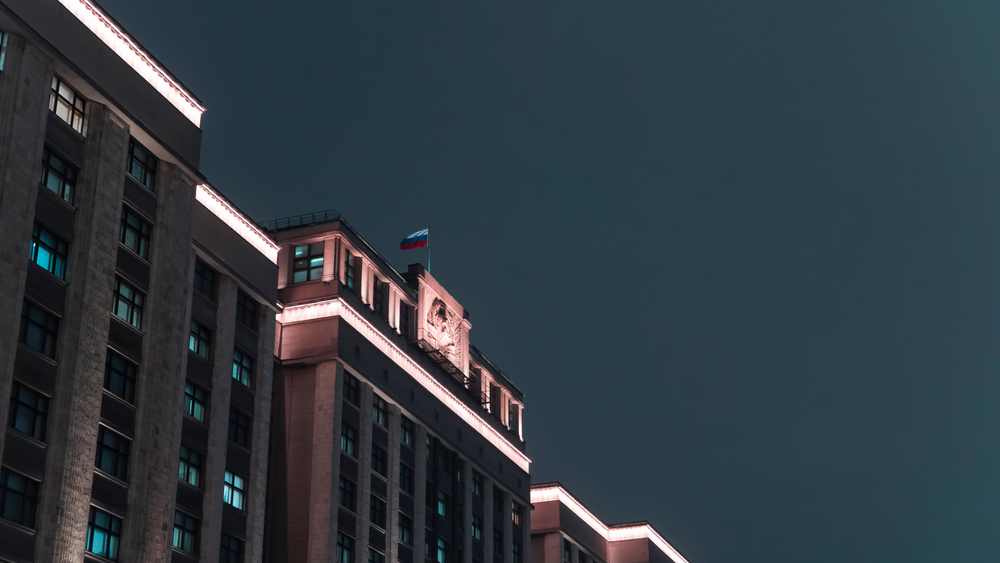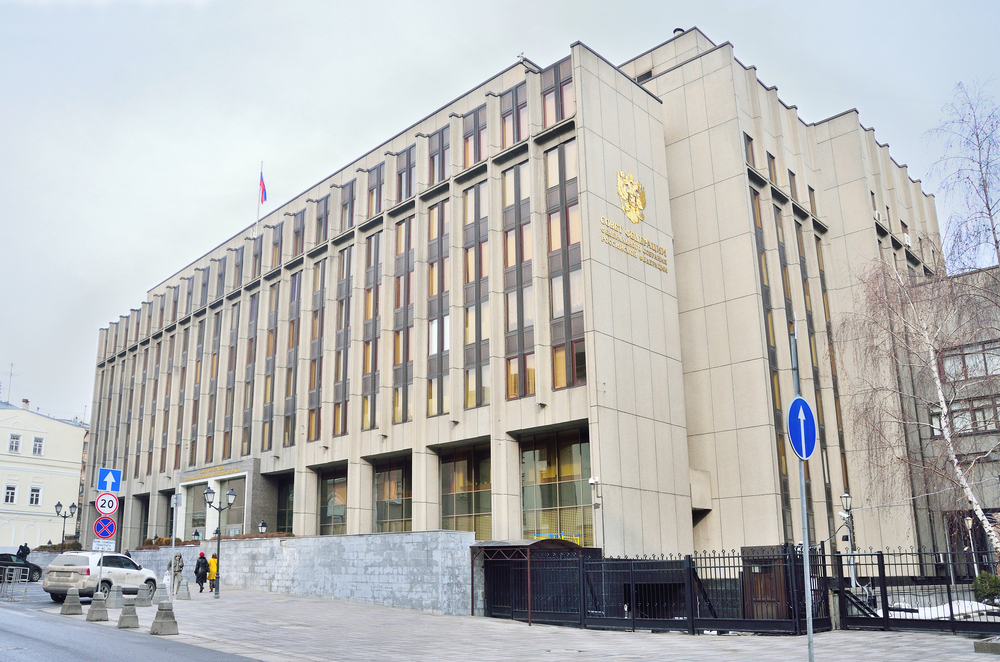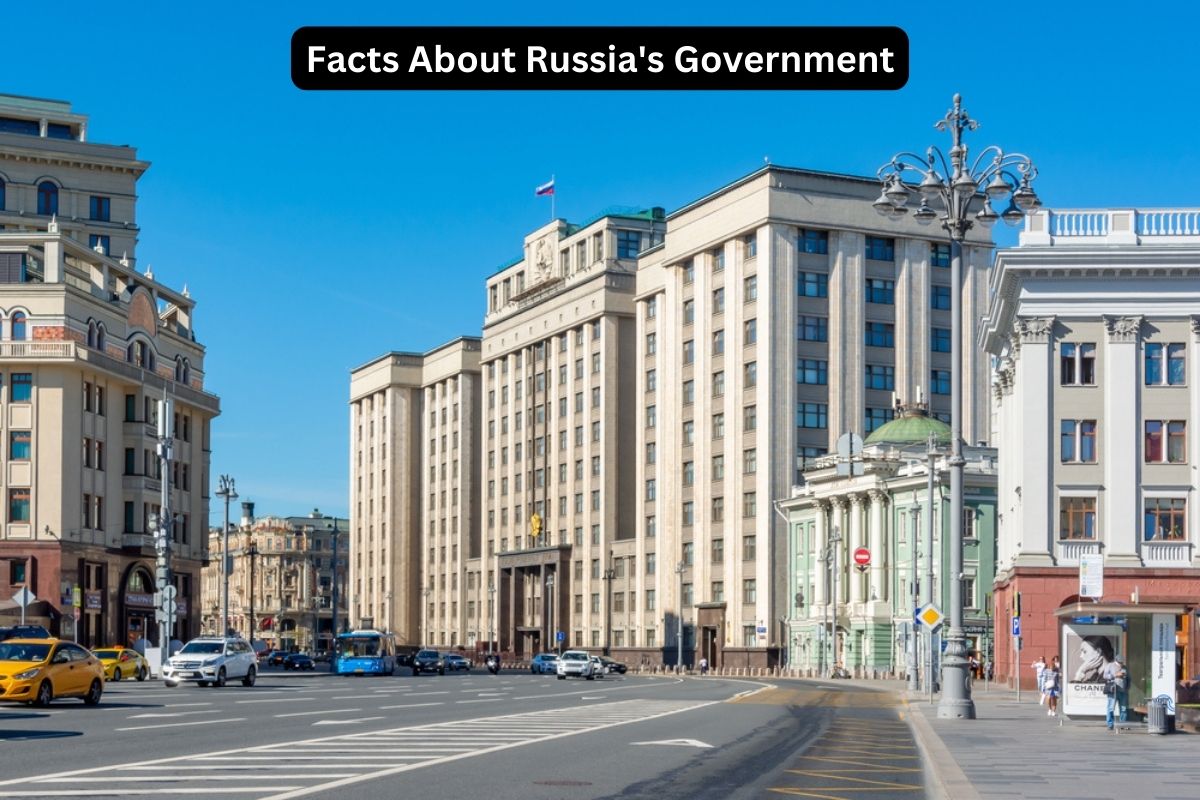Russia’s government is a dynamic entity shaped by its history, culture, and geopolitical influences.
This brief provides a snapshot of its political landscape, from its federal semi-presidential republic structure to the roles of key figures like President Vladimir Putin and Prime Minister Mikhail Mishustin.
Delving into the Federal Assembly, dominant political parties, federal subjects, judiciary, state-owned enterprises, and security agencies, this overview offers a concise glimpse into the complexities of Russia’s governance.
Russia’s Government Facts
1. Type: Federal semi-presidential republic
Russia’s government is structured as a federal semi-presidential republic. This means it has elements of both a presidential system, where the president is the head of state and government, and a parliamentary system, where the prime minister and the cabinet are responsible for the executive branch.
Also Read: Facts About the History of Russia
In Russia, the president serves as the head of state and holds significant executive powers, while the prime minister leads the government’s day-to-day operations and is appointed by the president.
The federal aspect refers to the division of power between the central government in Moscow and the regional governments of Russia’s federal subjects, each with its own degree of autonomy.

2. Constitution: Adopted in 1993
Russia’s current Constitution was adopted on December 12, 1993, following a referendum. It replaced the Soviet-era constitution and established the legal framework for the country’s political system and governance.
Also Read: Putin’s Rise to Power Timeline
The Constitution outlines the structure of the government, including the separation of powers between the executive, legislative, and judicial branches. It also enshrines fundamental rights and freedoms for Russian citizens.
3. President: Vladimir Putin
Vladimir Putin has been the President of Russia since May 7, 2000, with a brief hiatus from 2008 to 2012 when he served as Prime Minister due to term limits. He was re-elected for a fourth term in 2018.
As president, Putin holds significant powers, including the authority to appoint the prime minister, dissolve the State Duma (lower house of parliament), veto legislation, and serve as commander-in-chief of the armed forces.
Putin’s presidency has been marked by a consolidation of power, assertive foreign policy, and economic reforms, as well as controversy over issues such as human rights and political freedom.
4. Prime Minister: Mikhail Mishustin
Mikhail Mishustin has been serving as the Prime Minister of Russia since January 16, 2020, appointed by President Vladimir Putin. Mishustin’s background is in economics and finance, having previously served as the head of the Federal Tax Service of Russia.
As Prime Minister, Mishustin is responsible for overseeing the day-to-day operations of the Russian government. This includes implementing policies, managing the cabinet of ministers, and representing the government in the State Duma (lower house of parliament).

5. Legislature: Federal Assembly with two chambers: State Duma and Federation Council
The Federal Assembly of Russia is the country’s legislative body and consists of two chambers: the State Duma (lower house) and the Federation Council (upper house).
The State Duma is composed of 450 deputies who are elected for five-year terms. It holds the primary responsibility for drafting and passing legislation, approving the budget, and exercising oversight over the government.
The Federation Council represents the federal subjects of Russia. Each federal subject is represented by two representatives: one appointed by the regional governor and the other by the regional legislature. The Federation Council reviews legislation passed by the State Duma and represents regional interests in the legislative process.
6. Dominant Party: United Russia
The political landscape in Russia is dominated by the United Russia party, which holds a majority in the State Duma and maintains close ties with the government.
Other significant political parties include:
- The Communist Party of the Russian Federation (CPRF), which advocates for socialist and communist policies.
- The Liberal Democratic Party of Russia (LDPR), which espouses nationalist and populist positions.
- A Just Russia, a social-democratic party that supports social welfare programs and progressive policies.
While multiple parties exist, United Russia has been the dominant force in Russian politics, often winning the majority of seats in the State Duma elections.
Opposition parties have faced challenges in gaining significant representation and have criticized the electoral process for lack of fairness and transparency.

7. Federal Subjects: 85, with varying degrees of autonomy
Russia is a vast country with a diverse population and geography, divided into 85 federal subjects. These federal subjects vary in their political status, with some having significant autonomy and others having less.
The federal subjects include republics, territories, regions, cities of federal significance, and autonomous areas. Each federal subject has its own government, constitution (within the framework of the Russian Constitution), and legislative assembly.
8. Judiciary: Includes the Constitutional Court
The judiciary in Russia is supposed to be independent, though in practice, it has faced criticism for lacking complete autonomy from the government. The Russian judicial system is based on civil law principles.
The Constitutional Court of Russia is the highest judicial body for constitutional issues, tasked with ensuring the conformity of laws and other legal acts with the Constitution.
Additionally, the Supreme Court of Russia serves as the highest court for civil, criminal, administrative, and other non-constitutional matters.
9. State-Owned Enterprises: Significant government control in key sectors
The Russian government maintains significant control over key sectors of the economy through state-owned enterprises (SOEs). These enterprises play a crucial role in sectors such as energy, transportation, banking, and defense.
Some of the prominent state-owned companies include Gazprom (energy), Rosneft (oil), Sberbank (banking), and Russian Railways (transportation).
While the government has pursued some privatization efforts, particularly in the 1990s, many strategic sectors remain under state control, contributing to the government’s influence over the economy.
10. Security Agencies: FSB, SVR, and GRU are prominent agencies
Russia has several security agencies responsible for maintaining internal security and protecting the country’s interests at home and abroad.
The Federal Security Service (FSB) is the primary domestic security and intelligence agency, responsible for counterterrorism, counterintelligence, and border security.
The Foreign Intelligence Service (SVR) focuses on foreign intelligence gathering and analysis, providing information to the Russian government on international matters.
The Main Intelligence Directorate (GRU) of the General Staff of the Armed Forces is the military intelligence agency, responsible for collecting intelligence through human intelligence (HUMINT), signals intelligence (SIGINT), and other means.
These security agencies play a crucial role in safeguarding Russia’s national security and advancing its strategic interests, both domestically and internationally.
